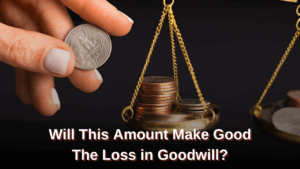Tay & Partners | View firm profile
Introduction
In trademark litigation, where a claimant elects not to pursue an account of profits, the usual course is to seek an inquiry into damages, aimed at compensating the claimant for the actual loss suffered as a result of the defendant’s acts of infringement and/or passing off. These damages typically fall under two principal heads: (i) loss of business profits; and (ii) loss of goodwill and reputation. The assessment of such damages is governed by the foundational principle of restoring the injured party to the position they would have been in had the wrongful acts not occurred.
Loss of business profits lends itself, at least to a degree, to a mathematical and evidentiary exercise. Courts typically examine historical earnings, projected growth trajectories, diversion of customers and reduction in sales attributable to infringing activities. Financial records, sales data and, where appropriate, expert evidence, often form the basis for quantifying the claimant’s lost profits.
In contrast, quantifying the damages for loss of goodwill and reputation presents a far more elusive and complex challenge. Goodwill is an intangible asset, reflecting the value of a brand or trade name, and customer loyalty and market recognition cultivated over time. While goodwill is generally presumed to have been harmed once infringement or passing off is established[1], the difficulty lies in assigning a monetary value to that loss. Unlike the assessment of loss of business profits, there is no settled mathematical formula or precise methodology to measure the erosion of goodwill and reputation, which may manifest subtly over a period of time.
This article explores the principles in assessing damages for loss of goodwill and reputation, with a particular focus on how courts navigate this intangible head of loss in cases of trademark infringement and passing off.
Valuing Loss of Goodwill and Reputation: From Principles to Practice
The UK courts have consistently recognised that there is no precise or mathematical method for assessing the loss of goodwill and reputation. In Draper v Trist & Ors [1939] 3 All ER 513, the UK Court of Appeal observed that courts are entitled to rely on ordinary business knowledge and common sense to infer that substantial deceptive trading will almost inevitably result in some degree of damage to goodwill, even where the exact extent or duration of that harm cannot be definitively quantified[2]. In such cases, the court must often resort to forming a reasonable and rough estimate, much like a jury would, based on the circumstances presented. Similarly, in Aktiebolaget Manus v R. J. Fullwood & Bland Ltd (1954) 71 RPC 243, the UK High Court followed the position that the appropriate approach was to form a rough but reasonable estimate, akin to that which a jury might make, and to assess, as best as possible, a fair and moderate sum to compensate the plaintiff for the injury suffered.
Given that goodwill and reputation cannot be quantified with mathematical precision, damages under this head are awarded as general damages[3], which do not require the same specific proof as is required for special damages.
Guidance on the relevant factors to be taken into account when assessing the loss of goodwill and reputation may be found in the decision of the Hong Kong High Court in Tam Wing Lun Alan & Ors v Tam Kwok Hung t/a Hang Mei Record Co & Anor [1991] 2 HKC 384. The Court identified several considerations, including:
(i) the extent of the plaintiff’s reputation or goodwill in the relevant market;
(ii) the conduct of the defendant’s acts, whether, for example, the acts of infringement or passing off was fraudulent or deliberate;
(iii) the circulation and scale of the infringing goods;
(iv) the degree of publicity or exposure given to the infringing goods by the defendant;
(v) whether the defendant derived any benefit or profit from the wrongful conduct; and
(vi) the impact of the wrongful conduct on the plaintiff’s business or goodwill.
In the fairly recent decision of Perusahaan Otomobil Kedua Sdn Bhd & Anor v Lee Lap Kee [2024] MLJU 2797, the Malaysian High Court awarded RM500,000 as a fair and reasonable sum for the plaintiffs’ loss of goodwill and reputation, taking into account the following key considerations:
(i) The plaintiffs had built up substantial goodwill and reputation in Malaysia in connection with their PERODUA automotive lubricants;
(ii) Significant investments in advertising and promotional activities had been made over the years to strengthen the market presence of the PERODUA automotive lubricants;
(iii) The plaintiffs recorded sales figures ranging from RM100 million to RM240 million between 2016 and 2022, evidencing strong market penetration;
(iv) The commercial value of the PERODUA brand and trademarks is regarded as substantial owing to the plaintiffs’ position as Malaysia’s second national car manufacturer;
(v) The PERODUA brand had received numerous prestigious awards and accolades, further enhancing its reputation and market standing; and
(vi) The defendant, in a Consent Judgment, had acknowledged that the PERODUA trademarks were well-known marks, entitled to protection under Article 6bis of the Paris Convention and Article 16 of the TRIPS Agreement.
The price tag of half a million ringgit, in the Court’s view, reflects the gravity of the infringement and the hard-earned reputation the plaintiffs had cultivated.
Conclusion
What is the moral of the story? In business terms, it is essential for business owners to maintain meticulous records. The advertising receipts gathering dust in your drawer could serve as a proof of your efforts in enhancing your brand’s goodwill; the footfall data buried in your laptop may showcase the local popularity of your store; and the sales records stacking up on your desk may demonstrate the broad impact of your products in the market.
As Lord MacNaghten aptly put: “Goodwill is the very sap and life of the business without which it would yield little or no fruit”[4]. Goodwill encompasses the entire advantage derived from a business’ reputation and relationships, built by years of honest work, or gained by lavish expenditure. For the customer, goodwill may be a label to represent a favourable disposition for which he possesses towards a place, but for the owner, goodwill is a manifestation of the strength and influence his business wields in the marketplace.

This article is authored by our Partner, Ms Lee Lin Li, Senior Associate, Ms Lim Jing Xian and Associate, Mr Goh Jing Xuan. The information in this article is intended only to provide general information and does not constitute any legal opinion or professional advice.
Written by:

LEE LIN LI, Partner, Head of IP & Technology Practice Group, [email protected]

LIM JING XIAN, Senior Associate
[email protected]

GOH JING XUAN, Associate
[email protected]
[1] Draper v Trist & Ors [1939] 3 All ER 513; Taiping Poly (M) Sdn Bhd v Wong Fook Toh (t/a Kong Wah Trading Co) & Ors [2011] 3 CLJ 837.
[2] Followed by the Malaysian High Court in Schwan-Stabilo Marketing Sdn Bhd & Anor v S&Y Stationery & Ors [2018] 9 CLJ 384, Sykt Faiza Sdn Bhd & Anor v Faiz Rice Sdn Bhd & Anor (and Another Suit) [2019] 1 AMR 180 and Perusahaan Otomobil Kedua Sdn Bhd & Anor v Lee Lap Kee [2024] MLJU 2797.
[3] Tommy Hilfiger Europe v McGarry & others [2008] IESC 36.
[4] Trego v Hunt [1896] AC 7.